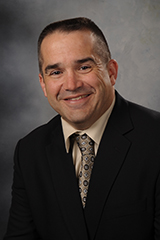January 22, 2019
“Are We There Yet?” and Other Important Questions

“I have a dream that my four little children will one day live in a nation where they will not be judged by the color of their skin but by the content of their character.”
The line above is from Dr. Martin Luther King Jr.’s famous “I Have a Dream…” speech. It was made on the steps of the Lincoln Memorial in the sweltering District of Columbia summer heat on August 28, 1963.
“Are We There Yet?” is an often heard lament during a long journey. Unfortunately, we only have to look towards a recent event this weekend at the Lincoln Memorial to understand that the answer to that question is a horrendously simple “No.”
For those of you who do not know about the incident, a contentious situation developed over the weekend at the Lincoln Memorial between three groups: a group of predominantly white teenagers from a Catholic high school, a group of Black Hebrew Israelites, and a group of American Indians participating in the Indigenous Peoples March. It was a clash of cultures caught on video and social media.
The weekend was awash with different perspectives and opinions on the situation. The incident led me to a series of questions.
Are we there yet? Clearly not.
Have we provided our youth with enough opportunities to become competent in navigating difference and show an appreciation for diversity? We do some of this, but is it enough?
Have we provided our volunteers, boards and colleagues with enough opportunities to become competent in navigating difference and show an appreciation for diversity? We also do some of this, but is it enough?
Can we honestly say that the youth we work with would never practice intolerance? No.
Can we honestly say that our volunteers, boards, and colleagues would never practice intolerance? No.
Have we done enough to achieve the dream? No.
Isn’t our open accessibility policy in Extension enough of a stand? No.
Have we done enough to attract a more diverse audience and create greater diversity among our colleagues? No.
Should we just give up? Never.
What can we do?
I am hardly an expert in these matters, but I would like to share some of my thoughts. First, make a commitment to practice inclusivity, show an appreciation for diversity, and exhibit tolerance. Second, take self-reflective training like our Navigating Difference, our Intercultural Development Inventory (IDI), and/or Project Implicit (https://implicit.harvard.edu/implicit/). Third, reach out to those affected by intolerance and implicit bias. Ask them to tell you about their experiences, and make sure you listen to understand. Fourth, determine how you as an individual and as an Extension professional can help to enhance inclusivity, to reduce intolerance, to reach out more effectively to diverse audiences, and be even more welcoming to greater collegial diversity.
Is this easy? No. Important things rarely are. There will be gains made and setbacks encountered. Giving up means yielding to hate and intolerance, which is something we cannot do. If Extension professionals really do believe in bettering the world, we must continue to strive to achieve the dream.